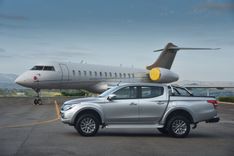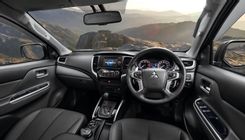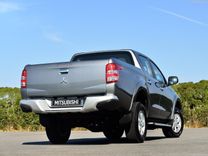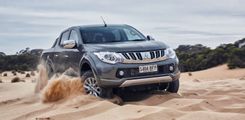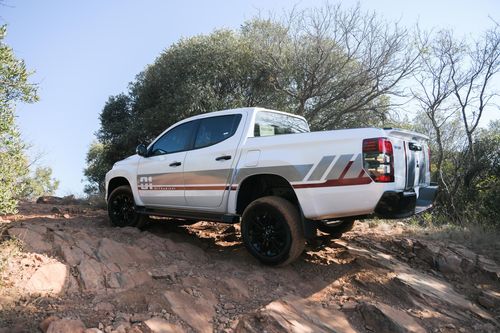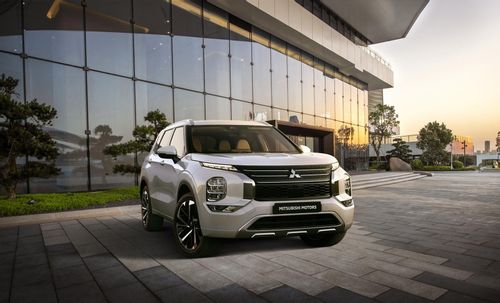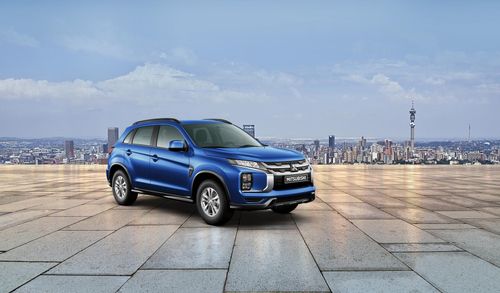In South Africa, we love our “bakkies”. As much we love our beer, biltong and boerewors. It’s the stable diet of the nation and this is clearly evident in terms of sales. Month on month, the Ford Ranger and Toyota Hilux dominate the vehicle sales charts, with the others picking up proverbial scraps. It’s a tough market for vehicles like the Amarok, Navara, Isuzu KB and Fiat’s recently launched Fullback pickup - and now Mitsubishi’s Triton has joined the fray.
Years ago, Mitsubishi’s pickup was a firm favorite among Saffas. It looked unconventional but had heritage, and true to its Japanese roots, it had a reputation for being bulletproof. A proper workhorse if ever there was one. But as the market evolved and pickups became more premium, Mitsubishi didn’t evolve as quickly as its competitors and resultantly lost out on market share.
But now, the new Triton is looking to change that, and win back some market share for the Japanese manufacturer. The problem is that Mitsubishi took too long to bring the fifth-generation to SA. And coupled with the fact that they do not have local manufacturing facilities like its competitors, they are hit hard with import costs, further driving up the price.
But is the new Triton a sufficient improvement from its predecessor and is it a worthy adversary for the other luxury pickups on offer in South Africa? For starters, when the Triton was being designed, the engineers at Mitsubishi were told to retain the essence of the Triton – its originality. But also to improve all aspects of ride, handling and comfort to create a truly SUV-like experience from behind the wheel. And after spending time with the new pickup, the combination of driving refinement, a more powerful engine, increased rear legroom, and a host of technological improvements make a compelling case for the Triton.
In recent years, the need for genuine lifestyle pickups have forced manufacturers to build pickups that not only keep their occupants comfortable on long trips, but also while being a place of solace whilst out in the working world. The Triton is no different, with the interior being very passenger car like. There’s a lot more premium touches and glossy finishings, further highlighting that the Triton is more lifestyle focused. There’s other niceties such as soft touch buttons, a fantastic leather-wrapped multi-function steering wheel, plush leather seats (the driver’s seat is electrically adjustable), dual-zone climate control, cruise control, as well as a touchscreen infotainment system with reverse camera that is very easy to use. The reverse camera is the perfect addition considering how high the load bin on the Triton is.
The famous J-line between the cabin and the load bin is there once again. This isn’t just a design trait but also is completely function. Thanks to this J-line, the passenger bench seat now sits at an angle that is very car like, and this in itself sees passengers sitting in a far more relaxed position, as well as having extra head and legroom, allowing Triton to carry five adults in complete comfort. Standard equipment includes HID headlights, foglights, meaty wheel arches and 17-inch wheels.
Much like the previous generation, propulsion comes courtesy of Mitsubishi’s rock solid MIVEC motor. While capacity now drops to 2.4-litres from 2.5-litres this is one of those cases where ‘downsizing’ works. The new 2.4-litre turbo diesel motor with variable valve timing outputs 133kw and 430nm, and is class-leading in terms of efficiency due to a low compression ratio of 15.5:1. And thanks to use of an aluminium block and other lightweight metallics in the motor, the engineers at Mitsubishi have managed to shed some 30kgs of the motors weight, which helps with responsiveness in handling and braking.
On the road, the new engine impresses with strong mid-range surge. It’s actually pretty brisk once it gets moving. Sure there is a little lag low down, but that’s typical of all oil-burners. Mated to the smooth auto box, shifts are smooth and noise levels of the 2.4 are actually quite low – once again underlining the fact that the Triton drives more like an SUV than a workhorse. We also managed to achieve stellar average fuel consumption of just 7.9L/100kms.
Two transmission options are available for the Triton Double Cab – a six-speed manual or a five-speed automatic transmission, with both available in 4WD guise. Interior of 4WD models can be distinguished by an Easy Select knob next to the gear lever, for switching between 2WD and high- and low-range 4WD modes.
Triton has had its suspension completely redesigned, and as a result it’s supremely capable with city driving, and is surprisingly nimble in traffic. The ride is relatively soft – almost car like – and stable too. The hydraulic steering is slow, yet feel is good. Numerous noise insulators as well as noise absorbing and damping materials further reduce NVH levels, resulting in a smooth and quiet car-like driving experience. As with the previous generation, the Triton is endowed with a class-leading turning radius of only 5.9 metres which makes maneuverability a pleasure.
But off the beaten track is where the Triton really shines. The slow steering becomes a dream off-road where it responds precisely to inputs, whilst remaining controllable in all situations. Handling is predictable, even in 2WD guise. Even with a loaded bin, the additional weight doesn’t blight ride quality or refinement, which remained excellent. While ground clearance is rated at 215 mm, the Mitsubishi is claimed to have an approach angle of 28 degrees, a departure angle of 22 degrees and a break over angle of 25 degrees.
The Triton comes with most boxes ticked in terms of safety. Build on the RISE (Reinforced Impact Safety Evolution) body structure, there’s plenty of airbags, side impact protection bars as well as a collapsible steering column. Active safety aids include everything from anti-lock brakes, to hill start assist, to electronic brake-force distribution, as well as active stability and traction control.
The Triton is competitively priced, starting at R479 900 for the 6-speed manual double cab 4X2 variant and up to R559 900 for the flagship 2.4 Di-DC 4X4 5-speed automatic. Still cheaper than some of its primary competitors like the Isuzu KB300, Ford Ranger and the Nissan Navara, but the Triton does offer an interesting alternative to these mainstream pickups. It might not have the presence or direct appeal that others have, but the Triton is exceptionally capable, and in many areas is definitely class-leading. If you are in the market for luxury multi-tool but your needs are geared more towards a utilitarian workhorse, then the Triton is definitely the pickup you want. It comes standard with a 3 year / 100 000km warranty, as well as a 5 year / 90 000km service plan, with service intervals every 10 000kms.

